death and other lives
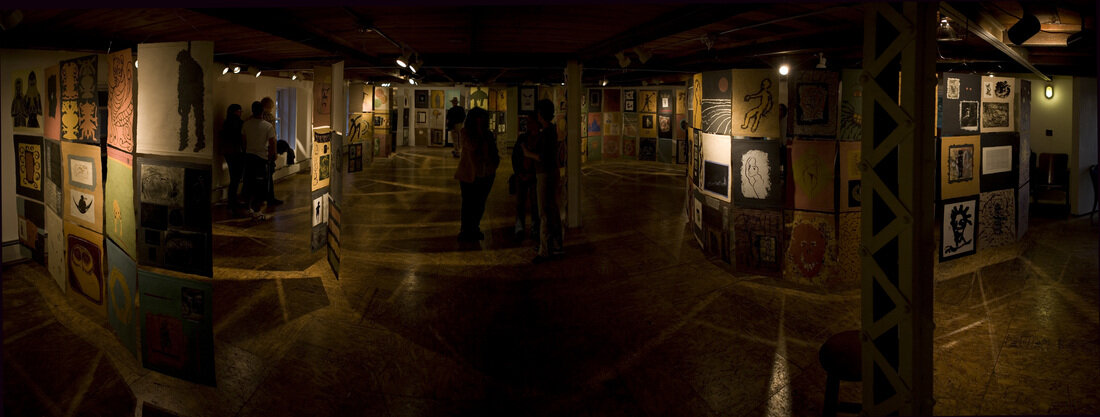
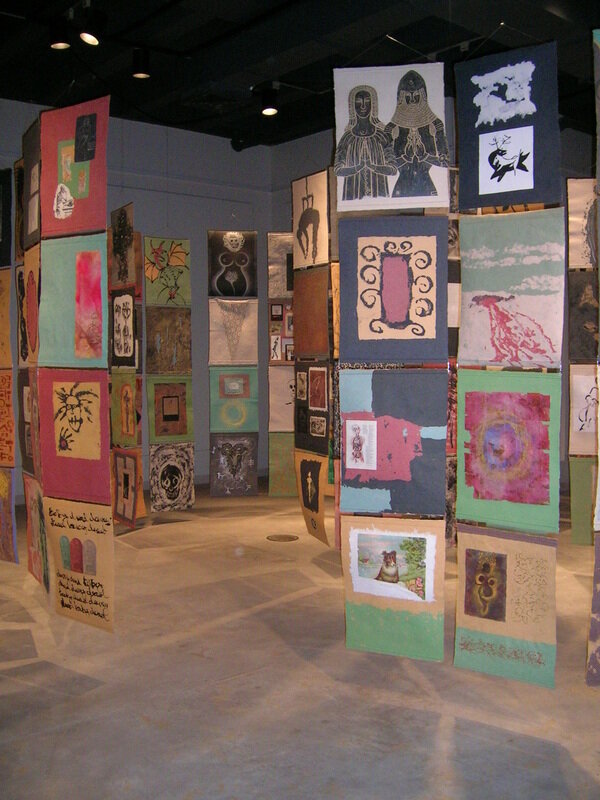
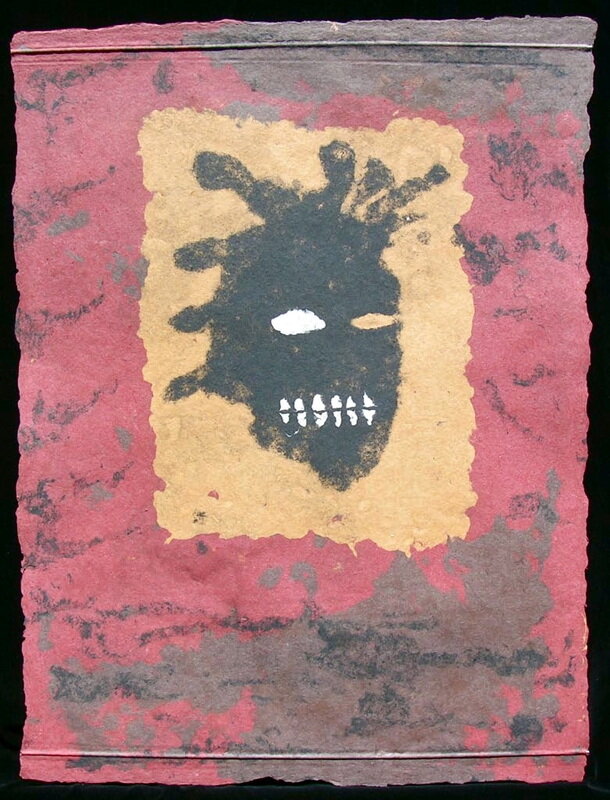
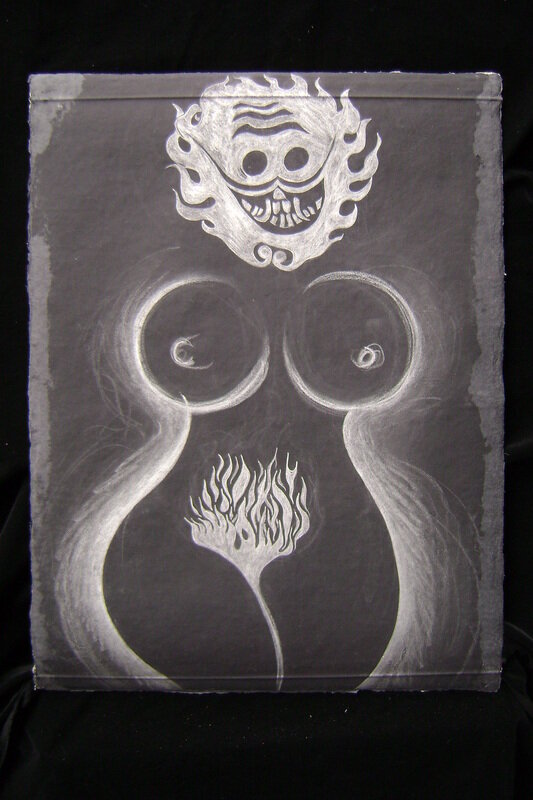
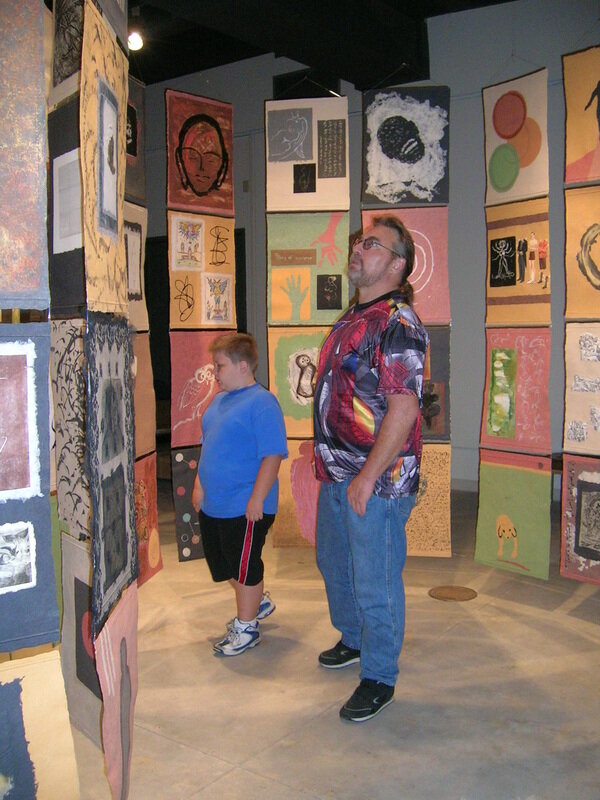
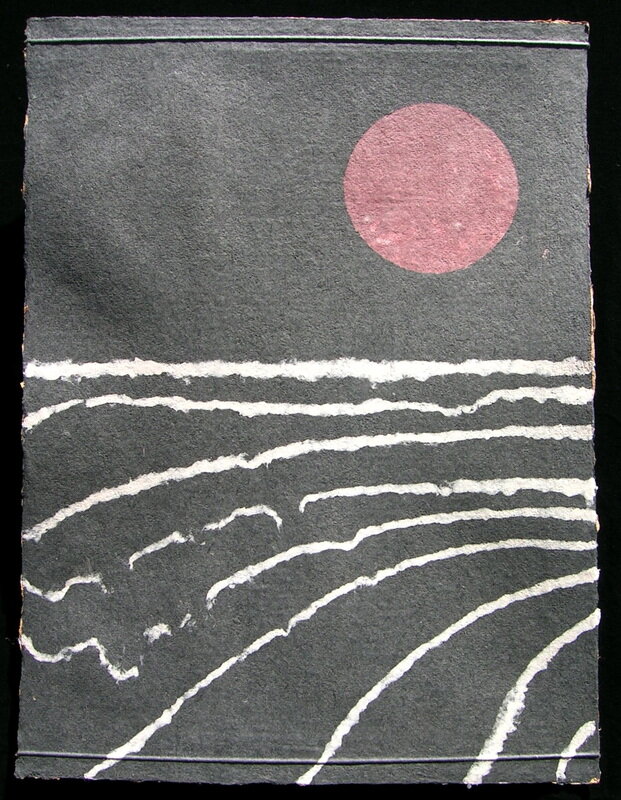

Death takes you everywhere.
"Death and Other Lives" is a book you walk through. There are 200 panels with art on both sides: drawings, pulp paintings, collages, prints, calligraphy and gravestone rubbings. It commemorates the death of my brother David and other experiences of death in my life.
I chose death as a topic because I wanted something big enough to be both mythic and encyclopedic. It was a good choice – death takes you everywhere.
I started by looking at the world’s religions – an obvious choice since religion often formulates the beliefs of a group about living and dying. My approach was rather shotgun, but that is how I think: I like to look at everything and make connections. I read the Tibetan Book of the Dead and the Egyptian one, the American Way of Death and Stiff. I looked at tantric art next to crucifixions, Kali next to Buddha. Pictures of heaven and hell, with the attendant implications of reward and punishment, were juxtaposed next to Indian versions of the wheel of life, and concepts of karma and reincarnation. Thinking about the Muslim faith became a daily study in concepts of war, peace, martyrdom, salvation, and the immediacy of religion to daily life.
In other realms, studying death leads to science, technology, politics, history, philosophy, moral development, art, writing, drama, and popular culture. Just reading the newspaper brings news of the deaths from the war we are involved in and every day I feel outrage or sympathy or anger. Reading on I will be called upon to decide what I think about stem cell research, or the merits of euthanasia. I will read the stories of the people who have died since yesterday in my town, and I will wonder how they died and how their families are doing. I will marvel at how we have managed to normalize the 43,000 annual deaths by car accident. I will hear about new life saving medicines and procedures, but also how we are killing ourselves prematurely by how we eat. I will worry about food and exercise because I don’t want to die, at the same time that I spend my day fascinated by death.
At the University of Chicago I studied art history and was drawn to the imagery of the Pre-Raphaelites and the symbolism of death that haunted their work. I also loved Holbein’s “Dance of Death” and Durer’s etchings that spoke of memory and death. At the Art Institute of Chicago I had a class in Funerary Art, and this crystallized for me that a vast body of art is devoted to death imagery. I began collecting images for collages and assemblages and also did many drawings on this theme.
In Los Angeles I worked at the Natural History Museum drawing bones. For five years I had a grant from National Geographic to draw all the bones of Argentavis magnificens, a bird of the Miocene epoch with a wingspan of 25 feet. My job was to draw all the bones of all the birds it might be related to. Being in the paleontology lab I was surrounded by the huge skulls and bones of dinosaurs. Being in the museum I had access to endless drawers of bones, beautifully ordered and catalogued. I felt right at home in this scientific paean to death, and I loved all the bones and teeth because they are what a physical body is reduced to once death has come and gone.
